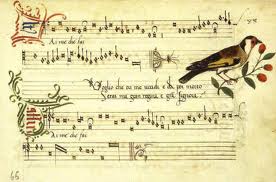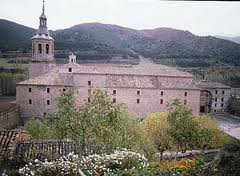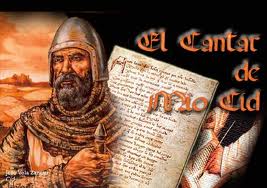Spanish Medieval Music

Music has had a place in Western society since times immemorial. Every civilization settled in Europe has demonstrated a liking for rhythm, regardless of how distanced they are from one another (both the civilizations and the rhythms). No matter what some might say, and despite the fact that, for centuries, it was inhabited by strikingly contrasting cultures, Spain is no different.
Rather than stifling the growth or fragmenting the nature of the country's heritage, the coexistence of multiple societies in the Iberian peninsula from Antiquity all the way through to the end of the Middle Ages has resulted in the formulation of a unique blend of tastes and influences that, in musical terms, is patently evident today, and which can be traced back to Spanish Medieval music.
As early as the VII century, Isisdore of Seville already mentioned the role of music in the Christian rite in his encyclopedic project, the Etymologiae. While he seems to have had no knowledge of musical notation, the Visigoths certainly did develop their own neume, which became the very first formalisation of Spanish Medieval music.
These early records of musical notation are closely linked to religious tradition, as they were used exclusively to structure Christian song books, or antiphonaries. The legacy of these books is staggering, as the neume used as far back as the VIII century remained the basic form of musical notation until the emergence of the five-line staff system.

It is also through the survival of several ancient antiphonies (those from Leon , San Millán de la Cogolla and Toledo) that we have come to know some details of the structure of the Hispanic Church Rite, also known as the Mozarabic Rite due to its heavy Oriental influence. Although it remains obscure whether there was any Islamic elements in its development, music certainly played an important role both in the Galician Rite and the Mozarabic one.
The tradition of Medieval music in Spain survived long after the demise of the Hispanic Rite in favour of the universally accepted (and imposed) Roman Rite. Nevertheless, outside the firm precepts of the Church, literature and music developed along parallel lines in Medieval Spanish society.
Both in terms of popular and, much more prominently, courtly entertainment, a tradition of recitation emerged, with different tones and characteristics, depending on the subject tackled. But as the equivalent to the Chanson de Geste gained popularity, the figure of the jongleur and the minstrel also gained prominence. And both of them were solely in charge of enhancing the value of their songs with rich performances that often included accompaniment with musical instruments such as reed pipes, hurdy-gurdies or lutes.
Al Andalus
Parallel to the development of Medieval music in the Christian kingdoms of the peninsula, the Arab influence and dominance over Andalusia meant that north-African traditions and tendencies were imported into the region, and indeed into Europe through this route. Music was extremely important during the times of the Caliphate of Cordoba, and many of the musical instruments used today in Western music are thought to be derived from Arab equivalents, such as the lute, the rebec or the tambourine.

Thus, between the XII and the XIII century there was in Spain a convergence of influences that saw the parallel establishment of an epic tradition aimed at a lay audience, exemplified by the Cantar de Mio Cid, together with a religious tradition, embodied in the Cantigas, which was closely linked to another form of religious canticles, the Gregorian chant, which was carried out in Latin and without instruments.
This diversity in the musical scene was also taken to a theoretical level, with polyphony emerging as the dominant style, over the previously favoured monody, which had been predominately used in Gregorian chants up to the XIII century. Affected by the tendencies prevalent over the Pyrenees, to the east, and on the Arab portion of the peninsula to the south, Medieval music in Spain was highly experimental affair, which you shouldn't miss if you are planning to go to Spain.
